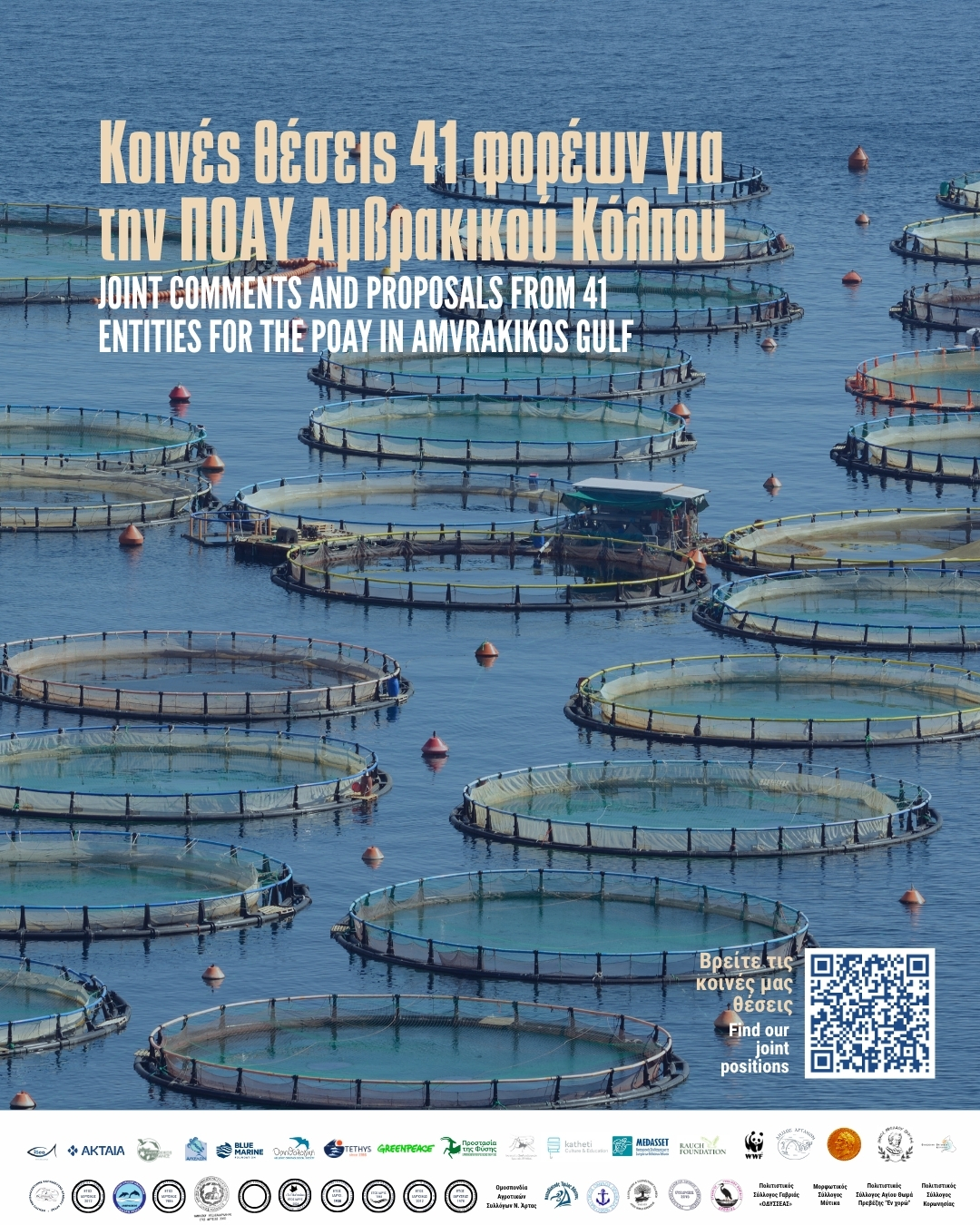Joint statement of 41 entities on aquaculture activites in the Amvrakikos Gulf
iSea joined forces with 40 other organizations, including municipalities, local associations, and environmental organizations, submitting joint comments to the public consultation on the Strategic Environmental Impact Assessment for the designation and demarcation of the Area of Organized Development of Aquaculture Activities (POAY) in the Amvrakikos Gulf!
The proposed 105% increase in production overlooks the ecological value of Amvrakikos and its already increased environmental burden.
The joint positions of the 41 organizations focus, among other things, on:
1. The ecological value of Amvrakikos Gulf
Amvrakikos Gulf is one of the most important ecosystems in the Mediterranean and is internationally recognized as a National Park (Joint Ministerial Decision 11989, Government Gazette 123/Δ/21.03.2008), has been designated a Wetland of International Importance under the Ramsar Convention (2/2/1971) and has been included in the Natura 2000 Network both as a Special Area of Conservation-Site of Community Importance , and as a Special Protection Area.
2. Establishment of POAY within the National Park and the resulting environmental impact
The design of the POAY within the Park undermines the protection of the Amvrakikos Gulf and its management objectives, which concern the protection of biodiversity and the resilience of the local community. The proposed reorganization and expansion of intensive fish farming units by more than 100% (105% increase in production) will lead to further environmental damage to an already sensitive and burdened area. Under these conditions, the quality of water and sediments will deteriorate even further, with negative consequences for biodiversity and existing productive activities, such as coastal fishing and the traditional fishing nets that are part of our cultural heritage.
3. Compatibility with the Special Environmental Study
The environmental study recognizes that the entire Amvrakikos Gulf is considered important for the conservation of biodiversity of protected and endangered species, such as the bottlenose dolphin Tursiops truncatus, the loggerhead sea turtle Caretta caretta, the critically endangered species Pinna nobilis, and endangered corals such as Cladocora caespitosa. Consequently, the proposed intensification and expansion of fish farming within the bay is particularly worrying, given the requirements of Regulation 2024/1991/EU on nature restoration.
4. Incomplete substantiation
The proposed POAY is based on old studies and data, which in no way reflect the current state of the ecosystem, and omits studies that reveal the continuous degradation of the bay, attributing the phenomena of anoxia, among other things, to intensive fish farming over the last 20 to 30 years.
For all the above reasons, the co-signing bodies express their opposition to the reorganization and expansion of fish farming units in the Amvrakikos Gulf.
The organizations’ alternative proposal is the gradual removal of fish farms and the development of a Restoration Plan (which will include actions such as the restoration of the seabed at the sites of abandoned fish farming units) , which could be incorporated into the National Nature Restoration Plan that the country is required to submit by September 1, 2026.
